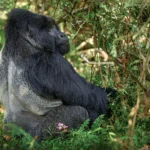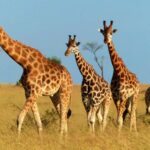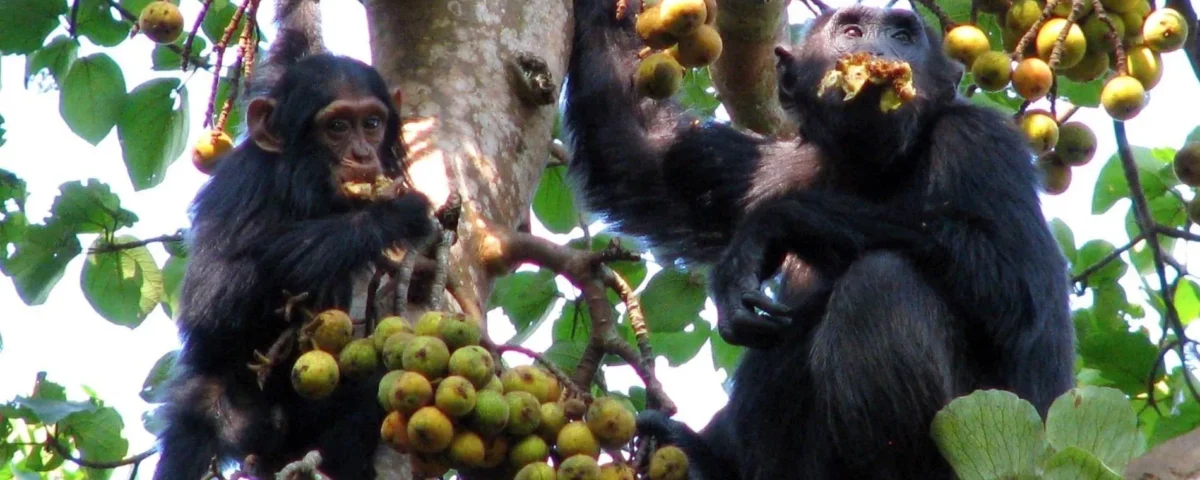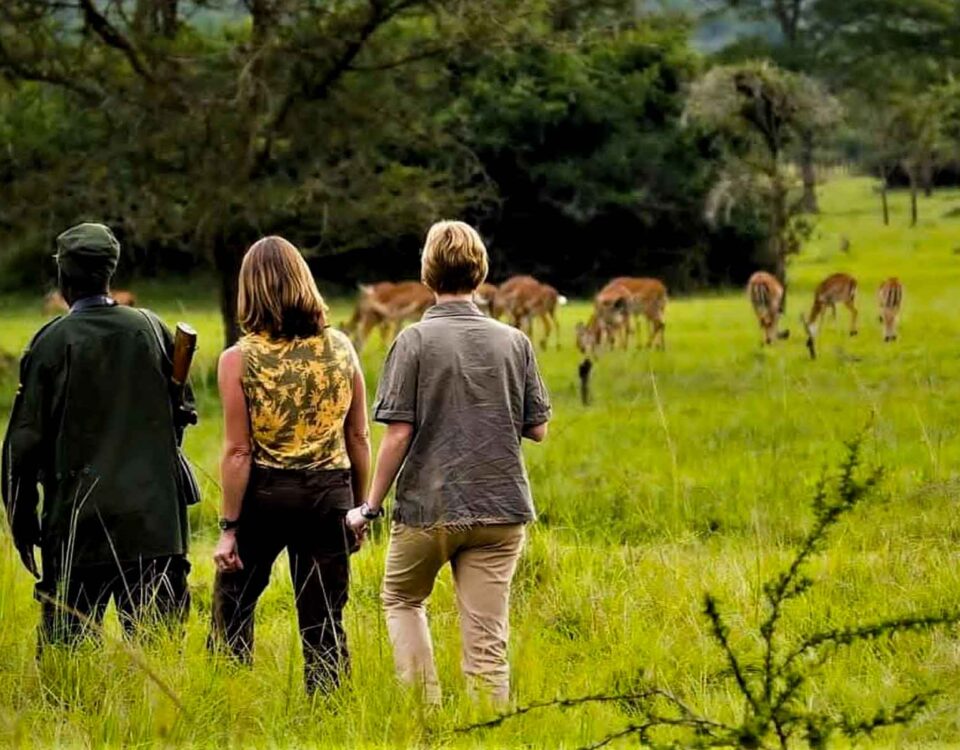
How Far in Advance Should I Book Gorilla Trekking in Uganda?
August 10, 2025
How Much is a Game Drive in Murchison Falls?
August 12, 2025How Do I Plan a Chimpanzee Safari in Uganda?
If you’re asking, how do I plan a chimpanzee safari in Uganda?, you’re on the path to one of East Africa’s most thrilling wildlife encounters. Uganda safaris are celebrated worldwide for their diversity, from Kenya safaris and Tanzania safaris to unforgettable gorilla trekking and chimpanzee tracking adventures. The country’s lush forests provide some of the best chimpanzee trekking experiences globally, especially in Kibale National Park, Budongo Forest, and Ngamba Island.
Planning Your Ultimate Uganda Chimpanzee Safari Experience
Planning your Uganda chimpanzee safari carefully ensures you don’t miss out on permits, guides, and the incredible cultural experiences that make this journey more than just a wildlife viewing trip. Murchison Falls Tours is here to help you navigate all the details — from securing chimpanzee and gorilla permits, understanding best travel times, packing essentials, to combining chimpanzee tracking with other safaris and cultural tours for a richer adventure.
This comprehensive guide answers how do I plan a chimpanzee safari in Uganda? by outlining everything you need to know to create a seamless, safe, and extraordinary wildlife safari experience.
Understanding Permits for Chimpanzee Tracking and Gorilla Trekking in Uganda
One of the first questions when you ask how do I plan a chimpanzee safari in Uganda? is about permits. These are essential and tightly controlled to protect Uganda’s primates. Chimpanzee tracking permits currently cost approximately USD 250 per person. They are required for trekking chimpanzees primarily in Kibale National Park — often called the chimpanzee tracking capital of Africa — as well as Budongo Forest Reserve and Ngamba Island Sanctuary.
In contrast, gorilla trekking permits, which many travelers combine with chimpanzee safaris, cost USD 800 per person in Uganda, making it one of the more affordable gorilla experiences compared to neighboring Rwanda. Both permits are managed by the Uganda Wildlife Authority (UWA) and can be obtained online or through trusted tour operators such as Murchison Falls Tours, who simplify the booking process and help secure permits well in advance.
Because permits are limited — only a fixed number of visitors are allowed per day to protect the animals and their habitat — early booking is crucial. Most travelers book chimpanzee permits at least three to six months ahead, while gorilla permits should ideally be secured six months to a year in advance, especially for peak safari seasons.
How to Secure Your Chimpanzee and Gorilla Trekking Permits
Knowing how do I plan a chimpanzee safari in Uganda? means understanding the permit booking process. You can purchase permits directly via the Uganda Wildlife Authority’s official website, but for convenience, many choose to book through local licensed tour operators like Murchison Falls Tours. Operators help coordinate your itinerary, lodge bookings, transport, and permits in one seamless package, relieving you of the complexities.
Booking early, especially if you want to combine chimpanzee tracking with gorilla trekking or Kenya safaris and Tanzania safaris, ensures permit availability and better accommodation choices. During peak periods — June to September and December to February — permits sell out quickly. We recommend initiating your booking process at least six months ahead for chimpanzee tracking, and up to a year ahead for gorilla trekking to secure your preferred dates and travel style.
Travelers who book well in advance also gain access to expert advice on trek preparation, lodge recommendations, and cultural excursions that enrich the safari experience.
Age Limits and Fitness Requirements for Chimpanzee and Gorilla Trekking
When planning a chimpanzee safari in Uganda, it’s important to know the age restrictions and physical demands associated with these activities. Uganda Wildlife Authority requires trekkers to be at least 12 years old to track chimpanzees, while gorilla trekking has a higher minimum age limit of 15 years. These limits ensure both the safety of visitors and minimal disturbance to the primates.
Trekking in dense forests involves hiking over uneven, sometimes steep and muddy terrain, often for several hours. Visitors should be in reasonable physical condition to enjoy their Uganda wildlife safari fully. For those who may find trekking challenging, combining primate tracking with more relaxed cultural tours or wildlife safaris, such as birding safaris or game drives in Murchison Falls National Park, offers an alternative way to experience Uganda’s natural beauty.
Murchison Falls Tours customize itineraries to accommodate fitness levels, age, and special needs, ensuring a safe and enjoyable journey.
Best Time to Visit for Chimpanzee Tracking and Gorilla Trekking
Understanding the best seasons to visit is vital in answering how do I plan a chimpanzee safari in Uganda? The ideal trekking periods coincide with Uganda’s dry seasons — June to September and December to February — when the trails are drier and more navigable, making chimpanzee tracking and gorilla trekking safer and more comfortable.
During these peak months, the demand for permits surges, which is why booking early is so important. The wet seasons (March to May and October to November) still offer rewarding experiences with fewer crowds and lower prices, but trekkers must be prepared for muddy, slippery paths and occasional heavy rains.
Many travelers combine chimpanzee tracking in Kibale with gorilla trekking in Bwindi Forest or Mgahinga Gorilla National Park during these dry months for a full primate safari experience. Others integrate Kenya safaris or Tanzania safaris into their itinerary to witness the Great Migration or Big Five game viewing, requiring thoughtful scheduling and advanced bookings.
What to Pack for a Chimpanzee and Gorilla Trekking Safari in Uganda
Packing appropriately is a crucial part of planning your chimpanzee safari in Uganda. Trekking through rainforests demands careful preparation to ensure comfort and safety. Here’s what you should bring:
- Lightweight, breathable long-sleeved shirts and trousers in earth tones to protect against insects and vegetation
- Waterproof jackets or ponchos for sudden tropical showers
- Strong, waterproof hiking boots with good ankle support and traction
- Thick gloves to protect your hands while moving through the forest
- A walking stick (often provided by guides) for balance on slippery or uneven terrain
- Insect repellent and sunscreen to protect your skin
- Binoculars and a camera with zoom lenses to capture wildlife and chimpanzee behaviors
- A small daypack to carry water, snacks, and personal items
Murchison Falls Tours provides detailed packing lists tailored to your safari itinerary and the time of year, ensuring you arrive fully prepared.
Cultural Experiences to Enhance Your Uganda Chimpanzee Safari
No Uganda safari is complete without immersing yourself in the rich cultural tapestry of the country. When asking how do I plan a chimpanzee safari in Uganda?, consider including visits to local communities for a more holistic experience.
Many chimpanzee safari itineraries include stops at traditional villages or encounters with indigenous groups like the Batwa people near Bwindi. Here, visitors learn about centuries-old customs, traditional dances, crafts, and forest survival knowledge that connect deeply with the wildlife around them.
Cultural safaris can be combined with primate trekking, wildlife safaris, and birding safaris, enriching your travel experience with human stories that complement the natural wonders. Tour operators such as Murchison Falls Tours specialize in integrating these cultural components into your safari seamlessly.
Combining Your Chimpanzee Safari with Other Wildlife Adventures
When you ask how do I plan a chimpanzee safari in Uganda?, it’s important to recognize the wealth of additional safari opportunities available. Many travelers combine chimpanzee tracking with gorilla trekking in Bwindi Impenetrable Forest or Mgahinga Gorilla National Park, creating a comprehensive primate safari.
Beyond primates, Uganda offers spectacular wildlife safaris in Murchison Falls National Park, Queen Elizabeth National Park, and Kidepo Valley, where visitors can witness lions, elephants, hippos, and a rich diversity of bird species on Uganda birding safaris.
For travelers interested in broader East African wildlife, combining Uganda safaris with Kenya safaris or Tanzania safaris provides access to the Serengeti, Masai Mara, and the Great Migration, adding thrilling plains game viewing to your itinerary.
Planning such multi-destination safaris requires booking permits and accommodations well in advance, further emphasizing the need to plan early.
How Do I Plan a Chimpanzee Safari in Uganda?
In summary, the answer to how do I plan a chimpanzee safari in Uganda? involves early and careful preparation. Securing your chimpanzee and gorilla permits—USD 250 and USD 800 respectively—several months in advance is vital, especially if traveling during the dry seasons from June to September and December to February.
Understanding age limits, physical requirements, packing essentials, and best travel times prepares you for an enriching and safe wildlife experience. Adding cultural tours and combining chimpanzee tracking with gorilla trekking or other Uganda safaris enhances the value and diversity of your journey.
Murchison Falls Tours are ready to help you navigate all aspects of your planning, ensuring your Uganda chimpanzee safari is a seamless, unforgettable adventure that meets your interests and budget.


